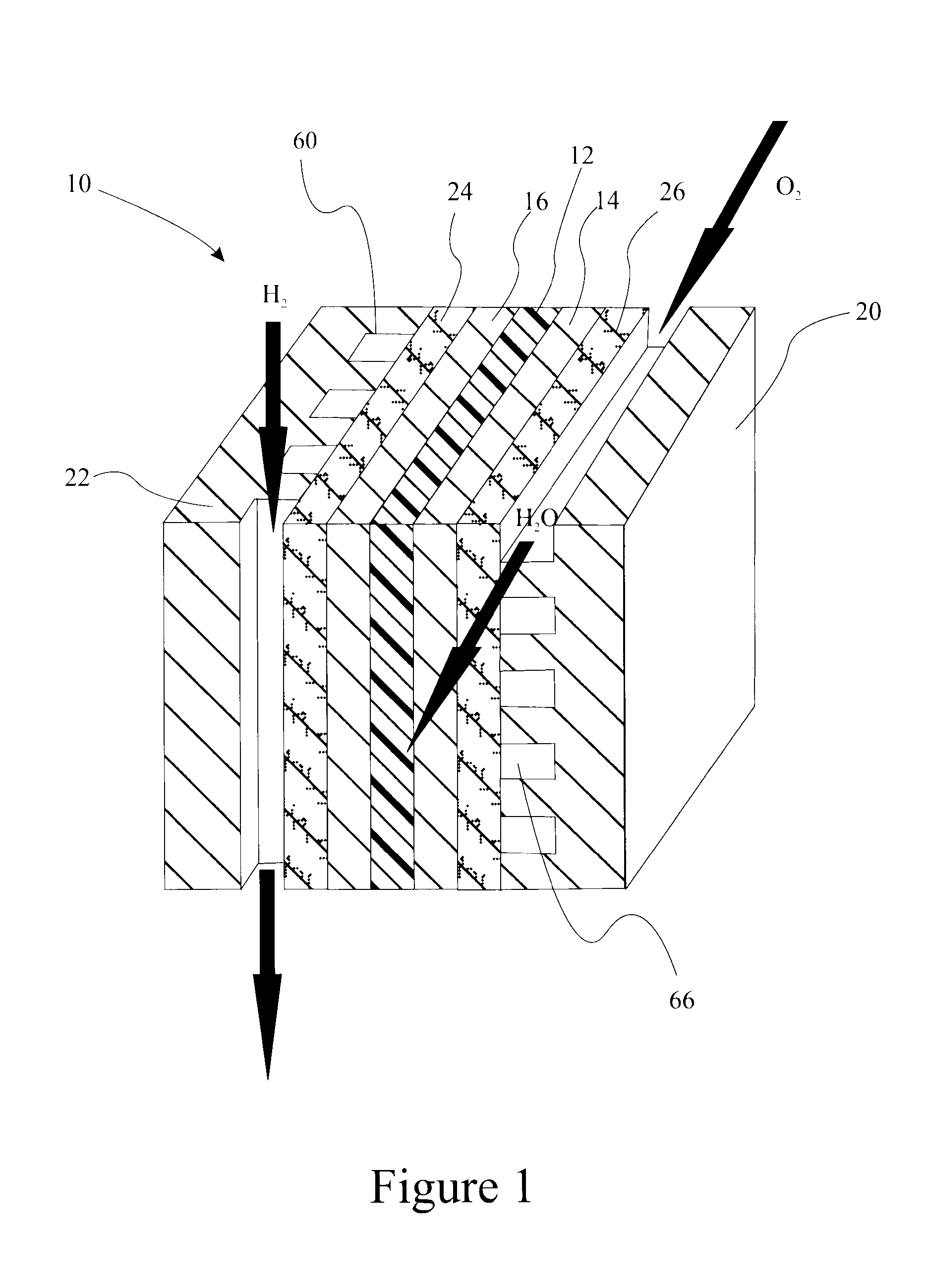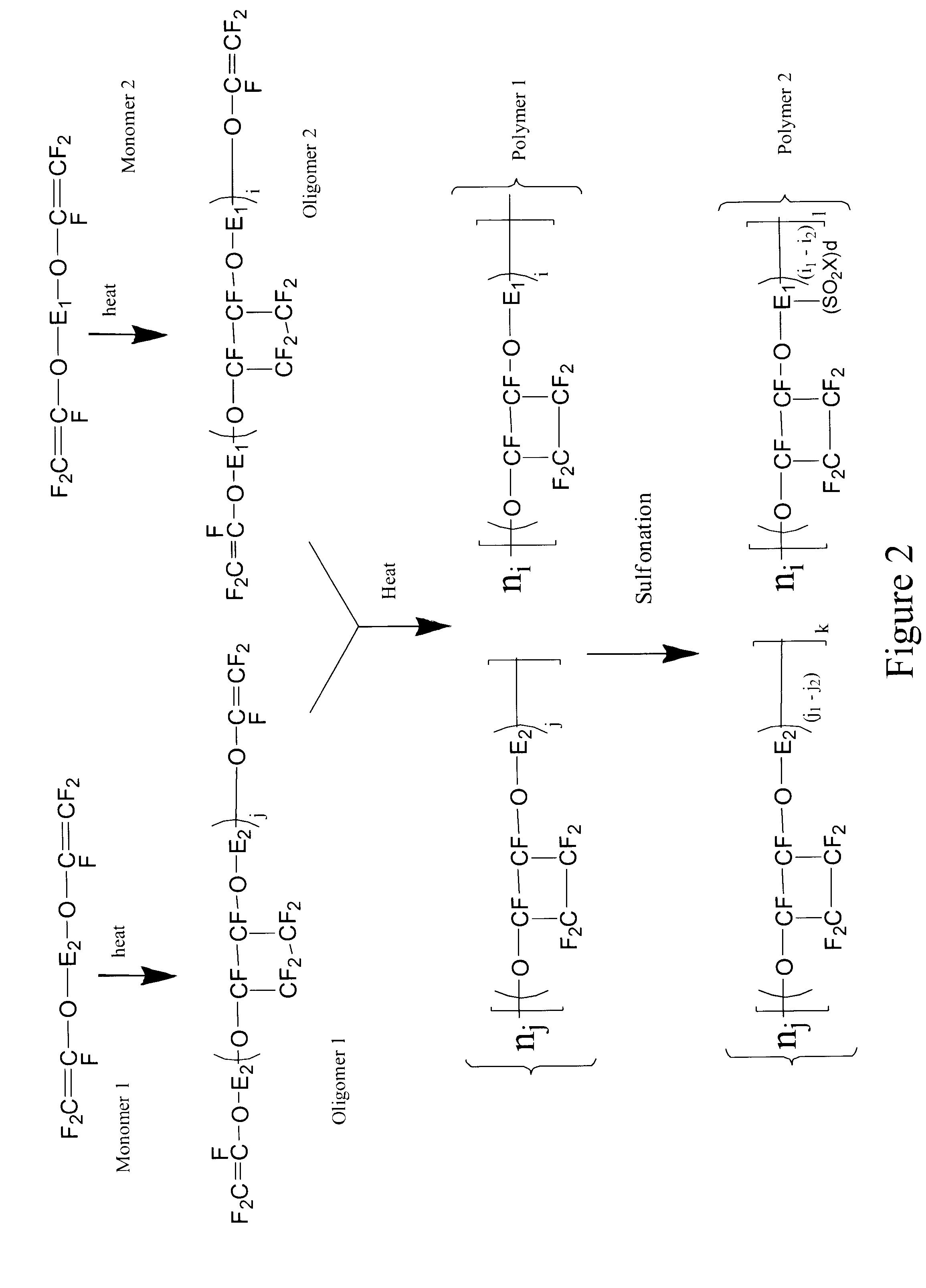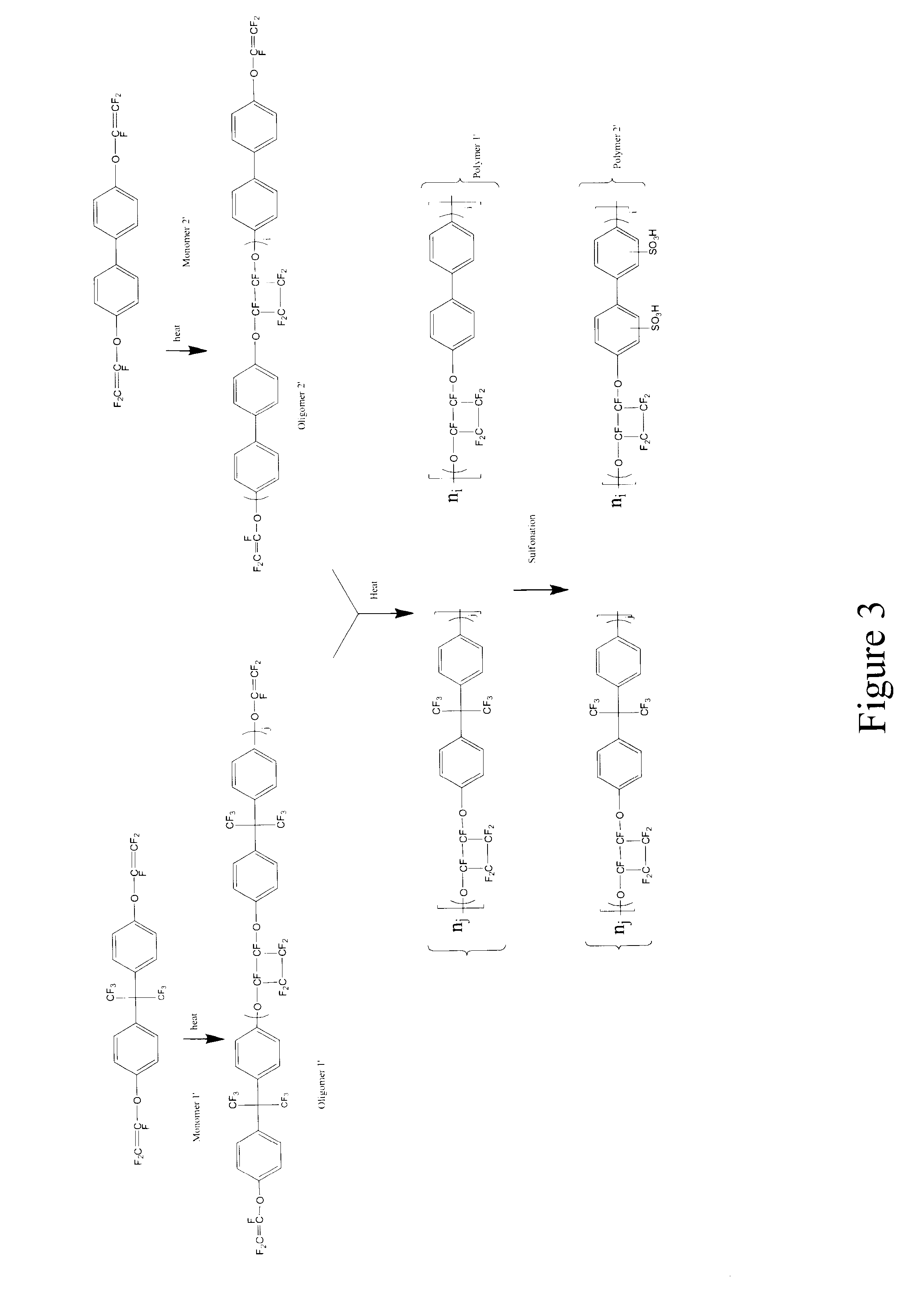Sulfonated perfluorocyclobutane block copolymers and proton conductive polymer membranes
a technology of cyclobutane block and sulfonated perfluorocyclobutane, which is applied in the direction of non-metal conductors, conductors, organic conductors, etc., can solve the problems of low humidity, water swelling at high humidity, and the mechanical robustness of random copolymer membranes
- Summary
- Abstract
- Description
- Claims
- Application Information
AI Technical Summary
Benefits of technology
Problems solved by technology
Method used
Image
Examples
example i
[0080]Mesitylene solutions of 6F (monomer, 40 g in 40 g mesitylene) and BPVE-oligomer (Mn=8,000, 80 g in 80 g mesitylene) are mixed together and degassed with Ar for about 1 hr at 60° C. The reaction mixture is then stirred (12 rpm) at 160° C. for 16 hours. The temperature is then raised to 180° C. and mesitylene is removed by distillation to leave a sticky solid. The residual solids are then heated as follows: 200° C. for 2 hours, 210° C. for 2 hours while continually stirring at 12 rpm, and finally 220° C. for 40 hours. (During this 40 hours, a timer is used to alternately switch the stirrer ON for 1 hour and OFF for 1 hour). All the reactions are carried out in a 1 L stainless steel reactor with mechanical stirring (stainless steel stirrer rod and stainless steel blades) and condenser. At the end of the reaction, the rigid polymer is cooled to 60° C. and completely dissolved in THF (480 g, 25 wt % solids) at 60° C. with increased stirring speed. The polymer solution in THF is fil...
example ii
[0083]Diphenyl ether (DPE) solutions of 6F (monomer, 5 g in 5 g DPE) and BPVE-oligomer (Mn=8,000, 10 g in 10 g DPE) are mixed together and degassed with Ar for about 1 hour@75° C. The reaction mixture is then stirred (12 rpm) at 160° C. for 1 hour. The reaction mixture is then heated as follows: 180° C. for 1 hour, 200° C. for 16 hours, 220° C. for 3 hours, 230° C. for 2 hours while continually stirring at 12 rpm and finally 235° C. for 85 hours. At 235° C., samples are withdrawn from the reaction mixture after 22 hours, 30 hours and 85 hours for gel permeation chromatography (GPC) molecular weight analysis. Towards the end of the reaction, the reaction solution inside the flask has a viscous gel-like appearance. All the reactions are carried out in a 3 neck flask with mechanical stirring (stainless steel stirrer rod and a Teflon blade) and condenser. At the end of the reaction, the viscous solution is cooled to 60° C. and diluted in THF (40 g, 25 wt % solids) at 60° C. with increas...
example iii
[0086]Diphenyl ether (DPE) solutions of 6F (monomer, 30 g in 30 g DPE) and BPVE-oligomer (Mn=8,000, 60 g in 60 g DPE) are mixed together and degassed with Ar for about 1 hour at 75° C. The reaction mixture is then stirred (12 rpm) at 160° C. overnight. The reaction mixture is then heated as follows: 180° C. overnight, 200° C. for 3 hours, 220° C. for 6 hours, 230° C. overnight while continually stirring at 12 rpm and finally 240° C. for 4 hours. The reaction is carried out in a 1-Lstainless steel reactor with mechanical stirring (stainless steel stirrer rod and a Teflon blade) and condenser. At the end of the reaction, the viscous solution is cooled to 60° C. and diluted in THF (270 g, 25 wt % solids) at 60° C. with increased stirring speed. The polymer solution in THF is filtered through a Teflon mesh filter cloth and precipitated by slowly pouring into methanol (4 L) while agitating with a glass rod. The cloudy methanol is decanted away and replaced with fresh methanol (2 L) and s...
PUM
| Property | Measurement | Unit |
|---|---|---|
| temperature | aaaaa | aaaaa |
| temperature | aaaaa | aaaaa |
| weight | aaaaa | aaaaa |
Abstract
Description
Claims
Application Information
 Login to View More
Login to View More - R&D
- Intellectual Property
- Life Sciences
- Materials
- Tech Scout
- Unparalleled Data Quality
- Higher Quality Content
- 60% Fewer Hallucinations
Browse by: Latest US Patents, China's latest patents, Technical Efficacy Thesaurus, Application Domain, Technology Topic, Popular Technical Reports.
© 2025 PatSnap. All rights reserved.Legal|Privacy policy|Modern Slavery Act Transparency Statement|Sitemap|About US| Contact US: help@patsnap.com



